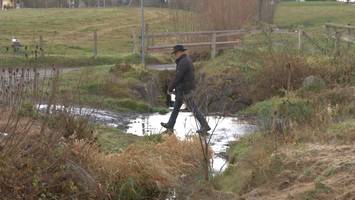Cardiovascular disease
It is difficult to get enough exercise in everyday modern life since we can do virtually everything while sitting down (working on the computer, online shopping, meeting friends online etc.).
A strong and healthy heart requires regular training. Now, with kybun, you can easily integrate this into your everyday life. When you get a lot of exercise, you not only feel fit but you also prevent a number of complaints such as cardiovascular diseases and high blood pressure.
Definition
There is no uniform definition for the term cardiovascular disease. In the broadest sense, it encompasses all diseases of the heart and circulatory system. However, it is usually used for subsets of these. Here are some of the illnesses listed by the WHO:
- High blood pressure
- Diseases of the veins, lymphatic vessels and lymphatic nodes that are not classified elsewhere (e.g. thrombosis, varicose veins)
- Ischaemic diseases (coronary heart disease and heart attack)
- Pulmonary heart disease and pulmonary circulation diseases (pulmonary hypertension)
- Cerebrovascular diseases (cerebral haemorrhage, stroke)
- Arterial diseases (arterial occlusive disease)
In human medicine, all diseases of the heart, vessels and circulatory system that are congenital and not acquired due to injury are usually considered cardiovascular diseases, e.g.:
- Heart disease
- Congenital arteriovenous malformations
- Tumours of the heart or vessels
- Heart and vessel injuries
On occasion, the term cardiovascular disease is also used just for the heart and vascular diseases associated with arteriosclerosis and the risk factors of diabetes mellitus, smoking, lack of exercise, genetic predisposition etc.
Causes
- Lack of exercise
- Elevated cholesterol values
- Excessive alcohol consumption
- Smoking
- Unhealthy diet
- Stress
Long-term consequences
Conventional therapy
The kybun principle of operation – being proactive
Micro-interval training
We recommend ‘micro-interval walking’ as a highly efficient training method. Here the intervals between walking slowly and ‘lightly floating’ are between 15 and 30 seconds.
This change in speed is not just fun but also highly efficient:
- In the ‘lightly floating’ phase, the cardiovascular system is activated and the musculature is loosened.
- In the ‘walking slowly’ phase, the cardiovascular system is regenerated and coordination (fine musculature) is trained. This works better the slower you walk, because you then stand on one foot (unstable, soft, elastic kybun shoe) for longer.
We are convinced that there is no better form of exercise for the health of the entire body than this ‘micro-interval walking’. It is important to only float lightly for about 15 seconds and to walk slowly until the pulse has recovered sufficiently again. This also results in optimum fat burning.
Initial reactions
Specific initial reactions with existing cardiovascular problems:
In the beginning, great physical demand is placed on your body in the kybun shoe/on the kybun mat. Since your cardiovascular system works harder, you have to breathe harder and will get out of breath more quickly. Therefore it is important to heed the advice under ‘Application tips’!
Click here for the general initial reactions experienced by kybun mat and kybun shoe beginners: Initial reactions
kybun exercises
Application tips
Reduce your walking speed a little in the beginning and only walk at a pace that allows you to talk to your partner.
If you are under the care of a doctor, we advise you to wear a pulse meter so you can keep to a pulse set for you personally by your doctor.
You should feel well at all times during kybun training! Feeling unwell is a sign that you are overtaxing your body and/or heart. Once again, adjust the speed of both intervals so that you feel good during training and avoid overstraining your body.
Check your body posture regularly: You should walk upright and keep the arms, shoulders and feet loose.
When you push the limits of your fitness, you tend to cramp up. This restricts blood circulation and the organs no longer receive an adequate supply of oxygen, which would force you to stop training after a short time.







